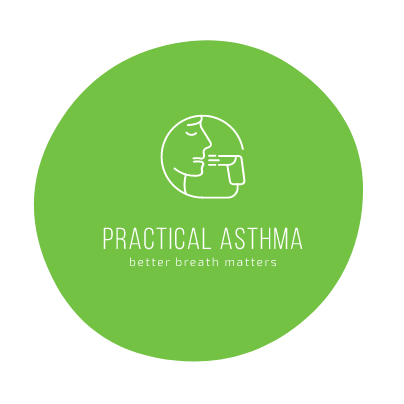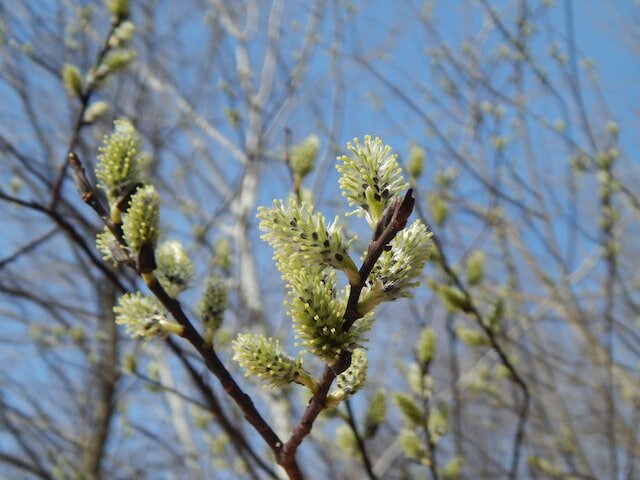Around 20 to 30 percent of all people with pollen allergy suffer from a so-called early blossom allergy. In them, typical hay fever symptoms develop very early in the year, such as rhinitis, watery eyes or irritation of the respiratory tract.
Early blossom allergy: hazel, alder and birch pollen
For some people affected by hay fever, the first symptoms of pollen allergy become noticeable as early as February or March, or even earlier, depending on the weather. Hazel, alder and birch are among the early bloomers that become active first and their pollen is already in the air at the beginning of the year. Those affected develop typical hay fever symptoms very early in the year, such as rhinitis, watery eyes or irritation of the respiratory tract.
Those who are allergic to birch pollen have an immune system that does not differentiate between birch, alder or hazel due to the similarity of the allergens in the pollen of the different early bloomers. In addition, there are possible cross-allergies, which can also cause symptoms when eating certain foods.
Many people with an early blossom allergy have more than one allergy and are also sensitive to grass pollen, for example. Then they sometimes suffer from the typical symptoms until late summer or fall. The period of suffering can then extend over almost the entire year and cause a great deal of distress to those affected. Sleep disturbances and lack of performance are only examples of possible consequences. With a causal treatment, however, these complaints can be alleviated in the long term.
Do you have your allergy under control?
Do you suffer from allergy symptoms and don’t know if you have them well under control? Our online allergy test gives you a quick and uncomplicated initial assessment of whether you have your allergy symptoms under control or whether a consultation with an allergist makes sense.
If you have allergy symptoms, don’t spend too long guessing – go to the specialist’s office!
Do you suspect that you or a family member is allergic to early blossoms? Then you should lose no time and seek advice from an allergist. She or he can not only tell you which allergens your immune system is reacting to, but also find the appropriate treatment. You can often find allergology specialists in the fields of dermatology, ENT or lung, or internists with an additional allergology qualification. General practitioners or pediatricians with the appropriate qualifications are also the right place to go when it comes to allergies.
What are typical symptoms of an early blossom allergy?
The early blossom allergy can be recognized by the following symptoms just in time for the pollen count of the early blossoms:
- Rhinitis, stuffy nose
- itchy or burning eyes
- irritated respiratory tract
- cough
- shortness of breath, allergic asthma
- swollen nasal mucous membranes
- skin reactions such as wheals, blisters or redness
If you notice such or similar complaints in spring, you should preferably have an allergy test performed in a doctor’s office. In most cases, the allergist can determine relatively clearly whether a tree pollen allergy is present and which are the triggering species.
What is an early blossom allergy?
In the case of an early blossom allergy, those affected react allergically to the so-called early blossoming trees, whose blossoming period begins very early in the year. Birch, alder and hazel are among the so-called early bloomers. In the case of an allergy to alder or hazel, the first symptoms often occur in winter. This is especially true in very mild winters, when the pollen count of these two trees can begin as early as December.
The following trees are also considered early bloomers:
- Beech
- Oak
- Hornbeam
- Ash tree
The allergy symptoms appear here increasingly from March, occasionally also already in February or earlier. From June on, the pollen load usually decreases significantly. In the worst case, the pollen load can even last from January to July.
Since the individual species prefer different locations and their pollen spreads rapidly through the air, it is hardly possible to protect oneself against the pollen of the early bloomers.
Often, early blossom allergies are accompanied by oral allergy syndrome. Therefore, many people with an early blossom allergy react allergically to some foods, such as the apple. Tingling and swelling in the mouth and throat, coughing and rarely even shortness of breath are possible symptoms of such a cross-allergy.
Allergy immunotherapy as home treatment: with one tablet daily
There are various therapeutic approaches for the treatment of an early blossom allergy. Allergy immunotherapy (hyposensitization) with tablets is a very effective form of therapy. The allergy tablet is taken once a day. It melts under the tongue within seconds. Only the first tablet is taken under medical supervision. After that, the treatment of early blossom allergy can be continued comfortably at home.
Sniffy nose (almost) the whole year? The pollen season is long…
However, you can do something about the cause of your early bloomer allergy. Allergy immunotherapy treats the cause of your allergy by gradually acclimating your immune system to tree pollen allergens.
Hyposensitization can also prevent the development of allergic asthma. Such a “floor change” affects every second person with allergy!
Early blossom allergy often as cross allergy
About every second person with a pollen allergy suffers from a cross allergy. In this case, the early bloomers are not the only triggers, but other allergies to other plants or foods exist at the same time. For anyone with an early blossom allergy, this often means that they suffer from hay fever symptoms well into the summer.
A common cross-allergy of early bloomers is to individual nut varieties, pome or stone fruits. Here, symptoms such as burning in the mouth or skin reactions can occur when consumed.
How is an allergy to early bloomers diagnosed?
The diagnosis of an early blossom allergy is usually made by a so-called prick test. In this simple skin test, the skin reaction to various allergens is tested. In this way, an early blossom allergy can be reliably diagnosed in many cases. In addition, the allergist can determine whether a cross-allergy exists.
A blood test may also be performed. Here, the blood is examined for antibodies against the tree pollen.
Therapy options for an early blossom allergy
Depending on the severity of the symptoms, so-called antihistamines can be prescribed. These drugs alleviate the allergic reaction, but do not combat the allergy itself.
For the causal treatment of an early blossom allergy, hyposensitization can be carried out. This involves training the immune system through regular confrontation with the allergen so that it develops a certain tolerance to the allergen in question.
What should sufferers pay attention to?
For people with an early blossom allergy it is important to protect themselves from the triggering pollen in everyday life. In the case of an early blossom allergy, this means that you should follow the pollen forecast already in warm winter months and in spring. The best way to do this is with a pollen app.
In everyday life, a few practical tips will help reduce pollen exposure:
- Keep doors and windows closed or use pollen screens.
- Do not wear street clothes in the bedroom.
- Wash your hair before going to bed.
- Avoid exercising or spending long periods outdoors on days with high pollen levels.
- Use pollen filters or air purifiers in the home and in the car.

